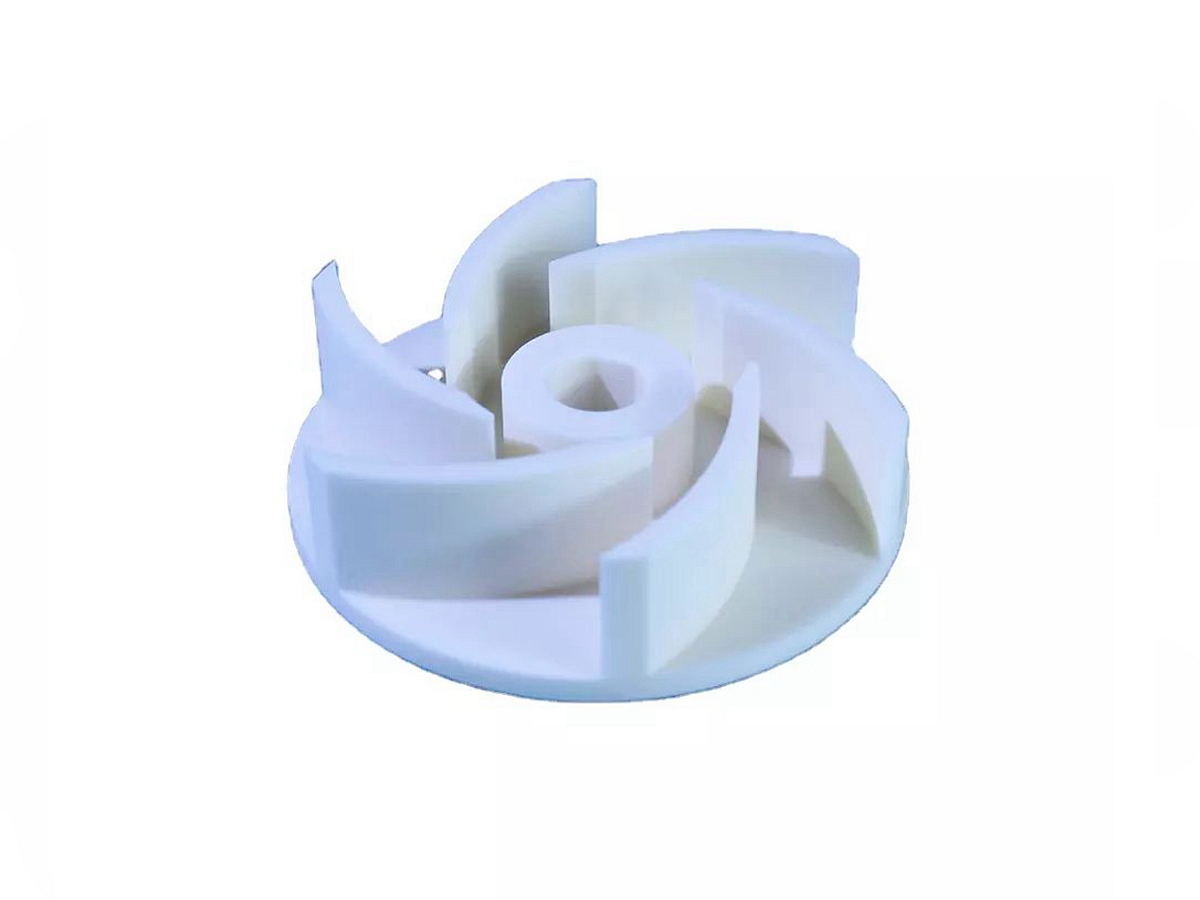Ceramic CNC Machining for High-Temperature Applications in Power Plants
Introduction to Ceramic CNC Machining for High-Temperature Applications in Power Plants
Power plants, particularly those involved in energy production from high-temperature processes, require components that can endure extreme conditions while maintaining high performance and reliability. Ceramic CNC machining offers a solution by enabling the production of high-performance ceramic components that are ideal for high-temperature environments. Ceramics, such as alumina, zirconia, and silicon carbide, are increasingly used in power plants due to their exceptional thermal stability, corrosion resistance, and high mechanical strength.
CNC machining of ceramics allows manufacturers to create custom, precision components, such as turbine parts, insulators, and combustion chamber linings. These components are crucial for ensuring safe and efficient operations in power plants, providing durability and longevity under extreme temperatures and pressure conditions.
Material Performance Comparison for Ceramic Parts in High-Temperature Power Plant Applications
Material | Tensile Strength (MPa) | Thermal Conductivity (W/m·K) | Machinability | Corrosion Resistance | Typical Applications | Advantages |
|---|---|---|---|---|---|---|
300-400 | 30-35 | Good | Excellent | Insulators, high-temperature seals | High strength, excellent wear resistance | |
1000-1200 | 2.1 | Moderate | Excellent | High-temperature seals, valve components | Excellent thermal shock resistance, high strength | |
500-600 | 120 | Moderate | Superior | Turbine blades, combustion chamber linings | Extremely high thermal conductivity, excellent wear resistance | |
300-350 | 170 | Good | Excellent | Heat exchangers, insulators | Excellent thermal conductivity, electrical insulation |
Material Selection Strategy for Ceramic Parts in Power Plant Applications
Alumina (Al₂O₃) offers high tensile strength (300-400 MPa) and excellent wear resistance, making it ideal for parts like insulators and high-temperature seals. It is commonly used in high-temperature applications where strength and durability are critical.
Zirconia (ZrO₂) provides superior thermal shock resistance and high tensile strength (1000-1200 MPa), making it suitable for seals and valve components in power plants. Its ability to withstand rapid temperature changes makes it ideal for components exposed to fluctuating temperatures.
Silicon Carbide (SiC) is a material with high thermal conductivity (120 W/m·K) and excellent wear resistance, which is ideal for parts exposed to extreme temperatures, such as turbine blades and combustion chamber linings. Its exceptional properties make it one of the most reliable materials for high-performance components in power plants.
Aluminum Nitride (AlN) has a high thermal conductivity of 170 W/m·K, making it ideal for heat exchangers and electrical insulators. It provides excellent electrical insulation while also handling high temperatures efficiently.
CNC Machining Processes for Ceramic Parts in High-Temperature Power Plant Applications
CNC Machining Process | Dimensional Accuracy (mm) | Surface Roughness (Ra μm) | Typical Applications | Key Advantages |
|---|---|---|---|---|
±0.005 | 0.2-0.8 | Turbine parts, combustion chambers | High precision, complex geometries | |
±0.005-0.01 | 0.4-1.2 | Cylindrical components, seals | Excellent rotational accuracy | |
±0.01-0.02 | 0.8-1.6 | Mounting holes, precision ports | Accurate hole placement | |
±0.002-0.005 | 0.1-0.4 | Surface-sensitive components, sealing parts | Superior surface smoothness |
CNC Process Selection Strategy for Ceramic Parts
5-Axis CNC Milling is ideal for creating complex, high-precision ceramic parts like turbine blades and combustion chamber linings. This process allows for intricate geometries with tight tolerances (±0.005 mm) and fine surface finishes (Ra ≤0.8 µm), which are critical in high-temperature power plant components.
Precision CNC Turning ensures excellent rotational accuracy (±0.005 mm) for cylindrical ceramic components, such as seals and valve parts. This process is ideal for producing smooth, uniform parts with precision features that are crucial for the reliable operation of power plant systems.
CNC Drilling guarantees precise hole placement (±0.01 mm), which is essential for creating mounting holes and precision ports in ceramic parts used in power plants. This process ensures that components fit securely within assemblies and maintain their functionality in high-temperature environments.
CNC Grinding is used to achieve exceptionally fine surface finishes (Ra ≤ 0.4 µm) on ceramic parts, essential for sealing components and other parts requiring smooth, high-quality surfaces to ensure proper sealing and durability in extreme conditions.
Surface Treatment Performance for Ceramic Parts in Power Plant Applications
Treatment Method | Surface Roughness (Ra μm) | Corrosion Resistance | Hardness (HV) | Applications |
|---|---|---|---|---|
0.2-0.6 | Excellent (>800 hrs ASTM B117) | 1000-1200 | Ceramic turbine components, seals | |
0.1-0.4 | Superior (>1000 hrs ASTM B117) | N/A | Ceramic insulators, combustion chamber components | |
0.2-0.6 | Superior (>1000 hrs ASTM B117) | 800-1000 | High-performance ceramic parts, seals | |
0.2-0.8 | Excellent (>1000 hrs ASTM B117) | N/A | Ceramic valves, high-temperature seals |
Typical Prototyping Methods
CNC Machining Prototyping: High-precision prototypes (±0.005 mm) for functional testing of ceramic components used in power plants.
Rapid Molding Prototyping: Fast and accurate prototyping for ceramic parts like seals and combustion chamber linings.
3D Printing Prototyping: Quick-turnaround prototyping (±0.1 mm accuracy) for initial design validation of ceramic components.
Quality Inspection Procedures
CMM Inspection (ISO 10360-2): Dimensional verification of ceramic parts with tight tolerances.
Surface Roughness Test (ISO 4287): Ensures the surface quality for precision components in power plant applications.
Salt Spray Test (ASTM B117): Verifies corrosion resistance performance of ceramic parts in harsh environments.
Visual Inspection (ISO 2859-1, AQL 1.0): Confirms aesthetic and functional quality of ceramic components.
ISO 9001:2015 Documentation: Ensures traceability, consistency, and compliance with industry standards.
Industry Applications
Power Generation: Ceramic turbine components, high-temperature seals, combustion chambers.
Aerospace: Engine components, high-performance seals, thermal insulation.
Chemical Processing: Reactors, heat exchangers, corrosion-resistant components.
FAQs:
Why are ceramics used in high-temperature power plant applications?
How does CNC machining improve the precision of ceramic parts?
Which ceramic materials are most suitable for power plant applications?
What surface treatments enhance the durability of ceramic parts in high-temperature environments?
What prototyping methods are best for ceramic components in the power generation sector?

